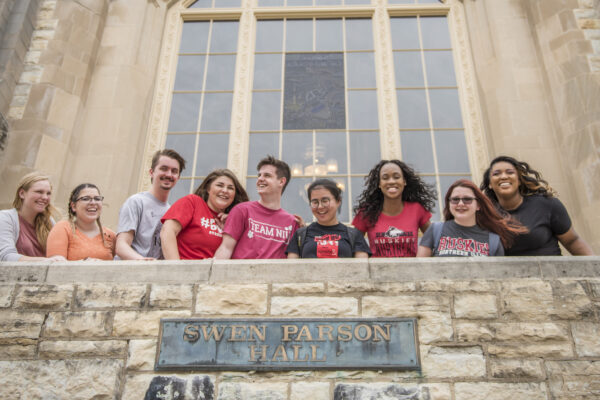Students, families, and advocates should urge their representatives to make higher education a priority in this year’s tax reform. You can do so using ACE’s Voter Voice feature. For more information, visit our Tax Reform resource page.
As Congress works on a sweeping rewrite of the tax code, students and families across the country are watching—and hoping this moment leads to real change that will increase access to higher education. The conversation in Washington will likely center on what to keep, what to cut, and how to fit higher education into the massive, complex puzzle that is the U.S. tax code. But lawmakers have a chance to do something simple but powerful: pass three bipartisan tax fixes that would make a big difference for low- and middle-income students.
These fixes may not grab national headlines, but for those trying to pay tuition, cover everyday expenses, return to school to finish a degree, or chip away at their student loan debt, they could make a meaningful difference. In a time of deep partisan divides, Congress should focus on policies with broad, bipartisan support—especially those that are low-cost and already proven to help students succeed.
Here are three commonsense ideas that would do just that:
1. End the Tax on Pell Grants—So Students Can Keep the Aid They Deserve
For over 6 million low-income students, the Pell Grant is a lifeline—essential financial aid to help cover the cost of college. But under current tax law, Pell Grants used for some non-tuition expenses like housing or childcare can be taxed as income. That means students from families earning less than $60,000 a year could end up with a tax bill just for trying to make ends meet while earning their degrees.
Even worse, a complicated interaction issue between Pell Grants and the American Opportunity Tax Credit (AOTC) means many students at lower-cost schools—especially community colleges—lose access to the up to $2,500 of aid available under the AOTC entirely. Under current law, students can’t apply both Pell Grants and the AOTC to the same tuition costs. If a Pell Grant covers most or all of a student’s tuition, as can be true for community college students, there may be nothing left to claim the credit on. The only workaround is to apply the Pell Grant to other expenses—like housing or childcare—which then makes it taxable. It’s a frustrating and unfair setup that affects an estimated 550,000 Pell-eligible students every year.
Repealing the taxability of Pell Grants and fixing this interaction issue would allow students to keep more of the financial aid they’ve earned and simplify their tax filing process. Bipartisan legislation—the Tax-Free Pell Grant Act—would make this change, and it’s time for Congress to act.
2. Modernize Section 127—So More Working Students and Families Can Access Education
Today’s students aren’t just full-time undergraduates living in dorms. They’re parents, veterans, career changers, and working professionals going back to school to earn a degree or build new skills. One of the best tools to help them is employer-provided education assistance under Section 127 of the tax code, which lets employers provide up to $5,250 per year in tax-free educational assistance and student loan repayment.
This benefit helps working students cover tuition, buy course materials, and even pay down student loans. But there’s a catch: the $5,250 cap hasn’t changed since 1986, and the provision allowing employers to use the benefit to help with student loan payments is set to expire this year.
Several bipartisan bills—such as the Upskilling and Retraining Assistance Act and the Upward Mobility Enhancement Act—would raise the cap and allow benefits to cover education-related tools and technology. Another bill, the Employer Participation in Repayment Act, would make student loan repayment a permanent option.
Modernizing Section 127 is a smart, low-cost way to expand opportunities for students who are balancing work, life, and learning—and give employers a powerful tool to invest in their workforce.
3. Simplify Higher Ed Tax Credits—So Students Actually Receive Benefits for Which They’re Eligible
In theory, the AOTC and Lifetime Learning Credit (LLC) are designed to make college more affordable. But in practice, the system is so confusing that many students don’t even know they’re eligible—let alone understand how to claim the credits.
Only 60 percent of eligible students claim the AOTC, and take-up rates are even lower for low-income students. That means thousands of dollars in aid per student are going unclaimed, simply because the system is too complex.
Students deserve better. A single, streamlined tax credit would help more people afford college, finish a degree, or return to school for career training. Past bipartisan proposals have called for combining the AOTC and LLC into one simplified, flexible credit. These plans would also expand what counts as eligible expenses—like computer equipment and childcare—so the benefit reflects the real costs students face today.
By making the system simpler and more effective, Congress can ensure that intended benefits actually reach the students who need them most.
A Better Deal for Students
Comprehensive tax reform doesn’t come around often. This year, Congress has a chance to use that opportunity to advance policies that support the millions of students working hard to improve their lives through education.
Fixing the tax treatment of Pell Grants. Modernizing employer-provided educational assistance. Simplifying higher education tax credits. These aren’t controversial ideas—they’re bipartisan, fiscally modest, and widely supported by educators, employers, and students alike.
If Congress wants to demonstrate that tax reform can be fair, effective, and focused on the future, they should start by putting students first.
If you have any questions or comments about this blog post, please contact us.




